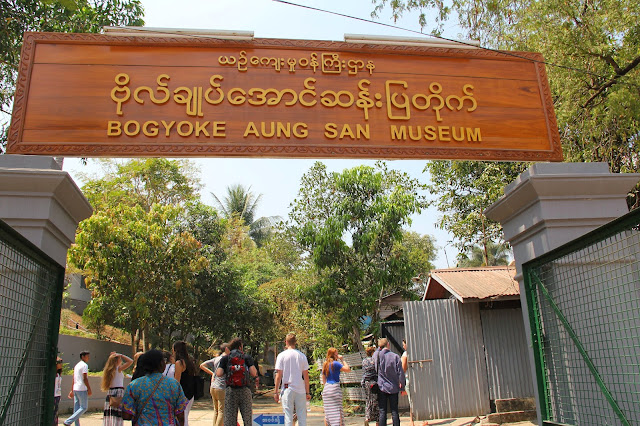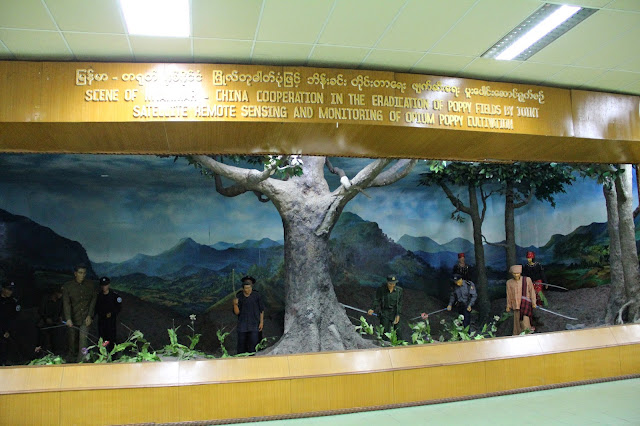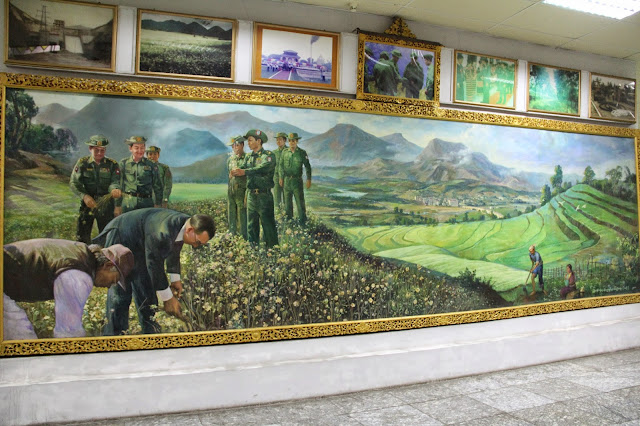
Each class taught on
Semester at Sea is required to include an 8 hour in-country field lab to go
along with the course (it counts for 20% of the grade). I proposed doing my
field lab for Political Geography in either Vietnam or Morocco, but for unknown
reasons I was assigned Myanmar—a country I had never been to. Last fall I
started to try and figure out what would work for my lab. I found a reference
to a quirky Drug Elimination Museum that sounded interesting. I hoped it would
talk about the role of opium profits in financing the Shan insurgency. I also
read about the home of Aung San the nationalist leader who is seen as the founder of modern Burma. It too sounded
interesting—and a good place to highlight the nationalist movement. A final
option was the National Museum with an exhibit of the various nationalities in
Myanmar. In the end, our local travel facilitator mentioned that he had a
friend who worked for the UN Office for the Coordination of Humanitarian
Affairs who could brief us—that sounded like a great addition so we dropped the
national museum. Before our field lab, we talked a lot about Myanmar in class
and I prepped students with a list of questions they should be thinking about.
On Wednesday February 25th we set out
after breakfast. During the 1.5 hour drive into Yangon, our excellent guide
Bunny talked about the history and politics of Myanmar including recent
democratic changes in Myanmar. She was very open about the changes and even
noted that if she had told us these things a few years ago she would have been
sent to a “reeducation camp” (prison). That’s progress. Our first stop we the
Drug Elimination Museum. It was indeed quirky (an animated claw reached out as
if to grab drug users and pull them down to hell) but it also illustrated how
outsiders (Portuguese, Dutch and British) brought poppies and opium use to
Burma, and how the state is trying to eradicate poppy growth in the Golden
Triangle by such things as crop substitution. The hoped for displays and
information about how opium revenues have been used to fund the Shan insurgency
did not exist, but instead there were displays about how the government was on
the move to wipe out drug production in the Shan and Kachin areas, but without
mentioning the tie between drugs and insurgency. The students enjoyed the
visit, but it was not as directly related to our class as I had hoped.
Next stop was the Aung San museum. (We also drove by the current home of his daughter Aung San Suu Kyi.) It is in the home where general Aung San lived when first married and where he lived when he was assassinated in 1947. It was nice to see where Aung San Suu Kyi spent her early years. This museum was a good place to reflect on issues of colonialism, nationalism and democracy. We went to a good Thai restaurant for lunch.


Our final stop was at
the UNOCHA (Office for the Coordination of Humanitarian Affairs) office. There
we met with three officials who are working with refugee Muslims in the Arakan
State and with refugees from the government and rebel fighting in Kachin State.
The three (from Austria, Denmark and USA) were very careful to remain neutral.
They noted the disputed use of names—Rohingya vs Bengalis. It was interesting
to hear how the international community (NGOs and governments) has been helping
these refugees and how UNOCHA coordinates it all. Also of interest was to learn
that cyclone Nargis was the catalyst for the entry of foreign aid into Myanmar.
The three officials all told of their educational and career path which was of
great interest to the students.
On the way back to the ship Bunny answered
questions and then I held a 30 minute debriefing in which students commented on
what we saw and learned. It was nice to have Bunny there to help me in
answering some of the questions that came up. There were a few minor points
where I felt Bunny was not giving a complete story (she said there had never
been a Shan insurgency, it was just drug lords that were fighting the
government) but for the most part she did an excellent job of covering the
field lab objectives.
More photos added much later:


Burma imports most of its cars from Japan. But to prove it does not want to conform to outside rules. It chooses to drive on the right side of the road, but with steering wheels for left lane side driving. That puts the driver on the outer side of the road. Very confusing.
The home of Aung San Suu Kyi
Buny, our guide.
Waiting while the MV Explorer changes berths.
More photos added much later:


Burma imports most of its cars from Japan. But to prove it does not want to conform to outside rules. It chooses to drive on the right side of the road, but with steering wheels for left lane side driving. That puts the driver on the outer side of the road. Very confusing.
The home of Aung San Suu Kyi
Waiting while the MV Explorer changes berths.































No comments:
Post a Comment